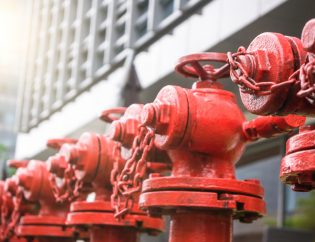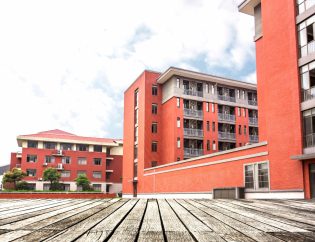Who We Met?
A few weeks ago this month, we met the admin team of a large Indian company that expressed interest in our process automation solutions. This isn’t new. We’ve engaged in similar countless, and fruitful, discussions with security and admin heads looking for solutions to automate processes in their businesses and organizations.
However, what was new to us was a unique problem that the operations team of the company was facing. The team has to manually track and monitor trucks that carry construction waste for disposal.
The company is building a business park in Bengaluru and, therefore, currently it generates tonnes of construction waste. They need to dispose of the waste from the construction site to a recycling plant on the outskirts of the city.
They must ensure that the construction waste generated at the site is segregated at source. It is also mandatory to empty the waste in the designated disposal ground. For this, the team has to monitor the trucks carrying the waste to the recycling plant.
What A Problem!
The trucks can potentially go to the wrong place and dispose of the waste materials there instead. In such a case, a heavy penalty would be imposed on the company for non-compliance - only because, from what we understood, the truck drivers couldn’t care less.
Currently, the team tracks the vehicles manually - this is not only time-consuming but also cost inefficient. During our discussion, we learnt quite a few issues related to construction waste disposal and the challenges involved.
In this blog, we discuss some of those issues. It’s important to note that we’re looking at the problems from the perspective of a construction waste generator. We also discuss how a tracking solution - a vehicle tracking system - is going to help the team deal with their unique challenge.
Construction and Demolition (C&D) Waste
The team informed us that they were building a business park. It generates tonnes of C&D waste daily that it has to segregate and dispose of in the outskirts of the city near a C&D waste recycling plant.
What is C&D Waste?
As per the Ministry of Environment, Forest and Climate Change (MoEFCC) - "construction and demolition waste" means waste comprising of building materials, debris and rubble resulting from construction, re-modeling, repair and demolition of any civil structure.
C&D waste includes materials like concrete, soil, bricks, wood, metals, glass, asphalt, and so on. Many of these materials can be recycled, reused, or repurposed, leading to reduced impact on the environment - by reducing C&D waste dumped in landfills and waterways.
C&D Waste Segregation & Disposal
Unmanaged C&D waste is increasingly becoming an environmental issue in India as it creates large landfills and pollutes land and groundwater. Governments and local authorities have been trying to manage C&D waste by enforcing segregation of the waste at source and setting up recycling plants. Separating the waste into different categories, such as concrete, wood, metal, and so on makes it easier to recycle or reuse the waste.
The Indian government has been promoting the establishment of C&D waste recycling plants to address the growing concerns of waste management in the construction sector. Several Indian cities, including Delhi, Mumbai, Bangalore, Chennai, and Pune, have initiated efforts to set up C&D recycling plants.
Currently, there is only one operational C&D waste processing plant in Bengaluru on the outskirts of the city. It has been functioning since 2017.
According to the e-magazine Citizen Matters - Bengaluru generates around 3,500-4,000 tonnes of C&D waste every day. This waste is a major source of pollution in the city, and it is also a major drain on the city's resources. C&D waste generators producing more than 20 tonnes per day or 300 tonnes per month per project must have an approved waste management plan. Moreover, bulk generators should segregate the C&D waste into five categories: concrete, soil, brick and mortar, wood and plastic, and steel. It must then be sent to authorised C&D waste processing units.
Additionally, disposing C&D waste is quite challenging for the waste generators. For example, C&D waste generators in Bangalore have to transfer the bulk waste to the "only" recycling plant that operates on the outskirts of the city.
From our discussion with the admin team of the company overseeing the construction of the business park, we learnt more about their unique challenge. On a regular day, around 20 trucks make around 20 trips carrying C&D waste from the construction site to the waste recycling plant on the outskirts of Bangalore. On a peak day, more trucks and trips are required.
Regarding compliance, all C&D waste generators have to comply with waste disposal rules. If they don’t follow the correct practices or if the waste is mismanaged, the local administration would impose a heavy penalty.
Therefore, the team has to monitor the trucks to ensure that each truck goes to its designated destination. For example, if a truck carrying soil disposes it in a place that is allotted for cement or bricks, the company would be penalized.
A Problem of Tracking
Hence, the primary challenge the team faces is that they have to track the C&D waste carrying trucks. They need to ensure that they have no oversight. Thus, driver accountability is crucial in such a scenario.
At the same time, manual tracking of the trucks as a daily process is cost and time consuming, not to mention - quite cumbersome.
How do you enforce accountability? This is the fundamental question that we, as a team that builds process automation solutions, ask ourselves on an ongoing basis.
Keeping tab on accountability is nearly impossible, especially, when a process is entirely dependent on people. The answer lies in automating processes. And this is where we add the greatest value - we create process automation solutions using latest technology.
Our Proposed Solution
A vehicle tracking system that monitors vehicles or individuals.
We recommended using a tracking application to ensure that the team is ultimately compliant in their C&D waste disposal process.
Our solution comprises an app and a dashboard. The app can be a valuable tool for businesses in various industries - it can track anything or anyone. Remember - the main goal is to enforce accountability.
Things A Vehicle Tracking System Can Do!
Let’s delve into the solution that we proposed to the team.
- A tracking system: Our system monitors vehicles’ trips and their progress in real-time, providing the team with up-to-date information on their live status.
- A mobile app: The system provides a mobile app for the truck drivers. The app is so simple that it has only a start and a stop button.
- Location tracking: The tracking system can monitor the location of the vehicles, thus, helping the team stay compliant. If the location of the vehicle can be tracked, they can prevent errors such as dumping of the C&D waste in the wrong place.
- Driver accountability: Real-time monitoring of the drivers’ location will ensure that the drivers are dispatched to the right location at the right time. And if there is any non-compliance, the driver can be held accountable. This is possible because all details are being recorded live and the necessary data can be viewed later as and when required.
- Fleet management: The team can also manage a fleet of vehicles. The system helps monitor the location and activity of all vehicles at once, thus, making the process quite efficient and effective.
Overall, the tracking system can assist the team in improving efficiency, reduce costs, ensure driver accountability and achieve compliance. It can also provide valuable data and insights that can inform decision-making and improve performance.
While local authorities must monitor waste disposal practices to ensure compliance with regulations, waste generators also need to do their due diligence about their internal processes. A tracking and monitoring system would help them do it effortlessly.










